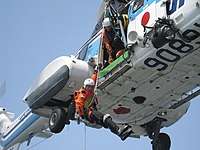Japan Coast Guard
| Japan Coast Guard 海上保安庁 Kaijō Hoan-chō | |
|---|---|
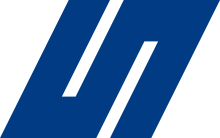 S-Mark | |
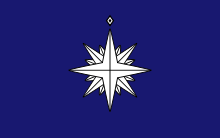 Japan Coast Guard ensign | |
| Abbreviation | JCG |
| Agency overview | |
| Formed |
1948 (As Maritime Safety Agency) April 2000 (As Japan Coast Guard) |
| Preceding agency |
|
| Employees | 13,744[1] |
| Annual budget | 210,601,000,000 yen[1] |
| Jurisdictional structure | |
| National agency (Operations jurisdiction) | Japan |
| Operations jurisdiction | Japan |
| Legal jurisdiction | Japanese Maritime Zone |
| Primary governing body | Government of Japan |
| Secondary governing body | Ministry of Land, Infrastructure, Transport and Tourism |
| Headquarters | Tokyo, Japan |
|
| |
| Agency executive |
|
| Website | |
| |
| Official Websites in Japanese and English | |
The Japan Coast Guard (海上保安庁 Kaijō Hoan-chō), formerly the Maritime Safety Agency, is the Japanese coast guard. Comprising about 12,000 personnel, it is under the oversight of the Ministry of Land, Infrastructure, Transport and Tourism, and is responsible for the protection of the coastline of Japan. It was founded in 1948.
Missions
The mission of the JCG is to ensure security and safety at sea as below:
- Maritime law enforcement and national security
- Search and rescue and disaster response
- Hydrographic and oceanographic surveying
- Maritime traffic management
As stipulated in Article 25 of the Japan Coast Guard Law, the JCG is not a military but a civilian organization. In the case of emergency situation, the JCG may be incorporated under the direction of the Minister of Defense as stipulated in Article 80 of the Self-Defense Forces Law.
Organization
National Headquarters
The Japan Coast Guard is led by a Commandant and two Vice Commandants. Lower ranking officers include the director general, directors and inspector generals.
Organization (as of April 1, 2009)
- Commandant
- Vice Commandant
- Vice Commandant for Operations
- Administrative Inspector General
- Administration Department
- Coast Guard Research Center
- Equipment and Technology Department
- Guard and Rescue Department
- Hydrographic and Oceanographic Department
- Maritime Traffic Department
- Coast Guard Academy (Kure)
- Coast Guard School (Maizuru)
- Moji Branch school (Kitakyushu)
- Miyagi Branch school (Iwanuma)
The Japan Coast Guard Academy is a 4-year-training institution, located in Kure, Hiroshima prefecture, established within the Coast Guard for the purpose of training students to become officers. Graduates are given a bachelor's degree upon graduation. About 40 cadets graduate from the academy each year.
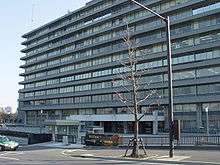
Operational units
Regional organization

The JCG has divided the nation into eleven regions to facilitate its coast guard operations. Each region maintains a Regional Coast Guard Headquarters, under which there are various Coast Guard Offices, Coast Guard Stations, Air Stations, Hydrographic Observatory, and Traffic Advisory Service Centers.
- 1st Regional Coast Guard Headquarters: Otaru, Hokkaidō (claim to include southern Kuril islands but never conduct cruise operations under Soviet Union's/Russian presence)
- 2nd Regional Coast Guard Headquarters: Shiogama, Miyagi
- 3rd Regional Coast Guard Headquarters: Yokohama
- 4th Regional Coast Guard Headquarters: Nagoya
- 5th Regional Coast Guard Headquarters: Kobe
- 6th Regional Coast Guard Headquarters: Hiroshima
- 7th Regional Coast Guard Headquarters: Kitakyūshū
- 8th Regional Coast Guard Headquarters: Maizuru, Kyoto
- 9th Regional Coast Guard Headquarters: Niigata, Niigata
- 10th Regional Coast Guard Headquarters: Kagoshima
- 11th Regional Coast Guard Headquarters: Naha, Okinawa
Special units
The JCG maintains three national-level elite units for each specialized fields:
- Special Rescue Team (SRT) (特殊救難隊 Tokushu-kyūnan-tai).
- Rescue swimmers and public safety diving team. Regional counterparts are Kidō-kyūnan-shi (機動救難士).[3]
- National Strike Team (NST) (機動防除隊 Kidō-bōjo-tai)
- Offshore oil spill and chemical hazard response team. The Japanese counterpart of the National Strike Force (NSF) of the USCG.[3]
- Special Security Team (SST) (特殊警備隊 Tokushu-keibi-tai)
- Counter-terrorism tactical team. Regional counterparts are Tokubetsu-keibi-tai (特別警備隊).[3]
Equipment
Vessels
Immediately after its creation, the MSA operated the second-hand ship of the former Japanese Navy, but only small and slow vessels were allowed to use.[4] From FY1949 the construction of new ships began. Because GHQ instructed to model a ship of the USCG, the 700-ton class PL was based on Cactus-class buoy tenders, the 450-ton class PM was based on Thetis-class patrol boat, the 270-ton class PS was based on Active-class patrol boat, and the 23-meter class PC was 75-feet patrol boat as a model. However, these ships did not comply with the actual work of MSA and the sea condition around Japan.[5]
As a result, when the Treaty of San Francisco came into force, MSA's own patrol ship's design work began. The PL type patrol vessels increased in size to 900-ton class, PS type patrol vessels differentiated into 350-ton class and 130-ton class. Later, the 350-ton class PSs were reclassified as PM type.[6]
In late 1970s, it was clear that the new international rules on exclusive economic zone would need a considerable increase in the size of the Maritime Safety Agency fleets. To cope with this dramatic increase in workload, 1,000-ton class PLs, 500-ton class PMs and 30-meter class PCs were built in large quantities. And JMSA also began the shipping operation of air-sea rescue helicopters with PLHs.[7]
Since the 1980s, criminal ships had advanced into the ocean and speeding up, and North Korean armed trawlers have come to appear. For this reason, in addition to designing 180-ton class PSs that combined both ocean-going capability and high-speed performance, speeding up of PL and PM type patrol vessels have also been aimed. Also equipped with remote control and automatic tracking function of machine cannon, precise shooting became possible.[8]
Statistics
The JCG operates 455 watercraft, these include the following:
- Patrol vessels: 121
- Patrol craft: 234
- Special guard and rescue craft: 63
- Hydrographic survey vessels: 13
- Aids to navigation evaluation vessels: 1
- Buoy tenders: 2
- Aids to navigation tenders: 18
- Training boats: 3
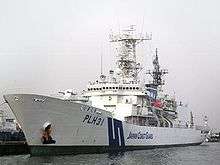
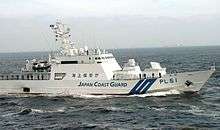 Hida (PL-51)
Hida (PL-51)
Aircraft

The JCG operates 74 aircraft, these include:
- Fixed Wing: 27
- Helicopters: 46
Vehicles
.jpg)
The JCG does not have any Emergency vehicle but civilian vans for transporting goods and personnel.[9]
Armaments
As described above, the JCG is not a military but a civilian organization, so the rules on the use of weapons are based on those of police officers, not self-defense officers.
Vessel-mounted weapons
Because the Allied countries wanted to maintain disarmament of Japan, the armaments of the MSA were restricted to only small arms in the earliest days. However, following the outbreak of the Korean War, the need to strengthen the security capability became necessary, and since 1954, the installation of the guns on the ships was started.[8]
Initially it was supposed to carry Mark 22 3"/50 caliber gun for large vessels (PL type), Bofors 40 mm L/60 guns for medium and small size ships (PM and PS type), and Oerlikon 20 mm L/70 guns in particular for small patrol boats (ARB type and auxiliary submarine chasers). Actually, however, the number of 40 mm guns was insufficient, and many of the small boats had 20 mm guns installed.[8]
From the 1970s, substitution of these old guns began. The 3-inch guns were retired by 1979, as the aging was progressing. Also from the FY1978 ships a Oerlikon 35 mm L/90 gun was used instead of a Bofors 40 mm L/60 gun, and from the FY1979 ships, JM61-M 20 mm rotary cannons were installed instead of Oerlikon 20 mm guns.[8]
Only a few of the 35 mm guns had a limited remote control function, most of these guns were manually controlled. Then, full-scale remote operation and automatic tracking function were introduced in the guns mounted on the Shikishima built in 1989. These 20 mm gun systems were added to the standard equipment list as JM61-RFS, and they have been mounted on many patrol vessels. And in order to counter with the heavily armed North Korean naval trawlers, most PLs have become equipped with a 40 mm L/70 gun or 30 mm chain gun remotely controlled with an optical director.[8]
Personal weapons
In the earliest days, MSA officers issued Nambu Type 14 pistols and M1 rifles. Since the 1960s, the Nambu pistols were replaced by New Nambu M60 revolvers, and some security units equip Smith & Wesson Model 5906TSW pistols.[8]
Since the late 1960s, the M1 rifle were replaced by Howa Type 64 rifles, and from 1990, Howa Type 89 rifles. In addition to these automatic rifles, SST is equipped with Heckler & Koch MP5A5/SD6 submachine guns. Howa M1500 is adopted as a sniper gun, and the SST also has anti-materiel rifles manufactured by the McMillan Firearms.[8]
History
In the Empire of Japan, coast guard operations were mandated for the Imperial Japanese Navy. But the Navy was dissolved with the surrender of Japan, and the ability of maintaining maritime order was declined seriously. Dense trade and smuggling had increased dramatically, even pirates had come to appear. Consultation between the Japanese government who wanted to restore public security capacity as soon as possible and the Allied countries wanting to maintain disarmament of Japan faced difficulties, but in 1946, an "Illegal Immigration Control Headquarters" was established in the Ministry of Transport, as cholera was transmitted to Kyushu by smugglers from the Korean Peninsula and was concerned to cause severe infection explosion.[10][11]
Meanwhile, the GHQ/SCAP also recognized the deficiencies of the Japanese coast guard system, and in March 1946, USCG Captain Frank M. Meals was invited to consider the situation. Captain Meals suggested the establishment of a comprehensive coast guard organization based on the USCG. In response to this, MSA was established as an external station of the Ministry of Transportation in 1948.[11] Its English name was changed to Japan Coast Guard in April 2000.[12]
Notable events
- Minesweeping operations
- Immediately after the end of the war, a large amount of mines laid by the US military were left in the waters around Japan, and the processing became an important mission of the MSA. For this mission, minesweepers of the former IJN were incorporated into the MSA, and later, transferred to the Safety Security Force, ancestor of the Japan Maritime Self-Defense Force.[13]
- In addition to activities in Japan's waters, in 1950, two flotillas minesweepers were sent to the Korean Peninsula under the United Nations flag during the Korean War.[14]
- Spy Ship Incident in the Southwest Sea of Kyūshū
- On December 22, 2001, JCG ships intercepted a Chinese-flagged vessel believed to be North Korean in origin, in the Japanese Exclusive Economic Zone between Kyushu and China. When the vessel failed to respond, she was fired upon by the JCG and an exchange of gunfire resulted. The unidentified vessel sank in the Chinese EEZ with all hands.[15] The ship, later salvaged by the JCG, was found to be carrying weapons and spy equipment.[16] The wreck and its contents were put on display at the Japanese Coast Guard Museum at Yokohama.[17]
See also
- Japan Coast Guard Academy
- Japan Coast Guard Museum Kure, Hiroshima Prefecture
- Japan Coast Guard Museum Yokohama, Kanagawa Prefecture
- Umizaru
- Umizaru 2: Test of Trust
- Battle of Amami-Ōshima
- North Pacific Coast Guard Agencies Forum
- DAICHI (ALOS)[18]
References
- 1 2 http://www.kaiho.mlit.go.jp/e/english.pdf
- ↑ INC., SANKEI DIGITAL. "【きょうの人】「我が国の領土・領海を守り抜く」海上保安庁長官 中島敏(なかじま・さとし)さん(60)". 産経ニュース (in Japanese). Retrieved 14 April 2018.
- 1 2 3 Yoneda 2016.
- ↑ Asanaga & Ōtsuka 1995, pp. 47-51.
- ↑ Asanaga & Ōtsuka 1995, pp. 51-60.
- ↑ Asanaga & Ōtsuka 1995, pp. 63-91.
- ↑ Asanaga & Ōtsuka 1995, pp. 120-143.
- 1 2 3 4 5 6 7 Nakanomyo 2015.
- ↑ Komine 2005.
- ↑ Maritime Safety Agency 1979, pp. 5-6.
- 1 2 Hasegawa 2010.
- ↑ New Fighting Power! Retrieved on April 25, 2008.
- ↑ Maritime Safety Agency 1979, pp. 6-28.
- ↑ Maritime Safety Agency 1979, pp. 22-23.
- ↑ 国境を守る海上保安庁. (in Japanese)
- ↑ 北朝鮮 工作船. (in Japanese)
- ↑ 海上保安資料館 横浜館-Japan Coast Guard Museum YOKOHAMA-. (in Japanese)
- ↑ Advanced Land Observing Satellite "DAICHI" (ALOS) (JAXA webpage)
Books
- Asanaga, Youichirou; Ōtsuka, Yukitaka (1995). Japan Maritime Safety Agency - their vessels and aviation. Seizando-shoten publishing co.,ltd. ISBN 4-425-77041-2.
- Maritime Safety Agency (1979). 30 years history of Japan Coast Guard. Maritime Safety Agency Foundation. ASIN B000J8HCXQ.
- Komine, Takao (2005). SST - the Japan Coast Guard Special Forces. Namiki Shobo. ISBN 4-89063-193-3.
Articles
- Hasegawa, Hiroyasu (2010). "The Differnce of Speculation in Japan-U.S.Government Around Establishment of the Japan Coast Guard" (PDF). Crisis & risk management review. Crisis & Risk Management Society of Japan (18): 11–20.
- Nakanomyo, Masami (October 2015). "History of shipboard guns on JCG's patrol vessels". Ships of the World. Kaijin-sha (825): 168–173.
- Miyake, Norio (November 2009). "Japan Coast Guard: Past, present, and future". Ships of the World. Kaijin-sha (714): 97–105.
- Yoneda, Kenji (July 2016). "JCG's special teams facing a new phase". Ships of the World. Kaijin-sha (840): 152–157.
External links
| Wikimedia Commons has media related to Japan Coast Guard. |
- Official Site (in Japanese)
- Official site (in English)
- JCG Academy Official Site (in Japanese)
- Details of vessels on Thomasphoto (in Japanese)
- Details of vessels on VSPG (in Japanese)
Coordinates: 35°40′33″N 139°45′00″E / 35.67583°N 139.75000°E
